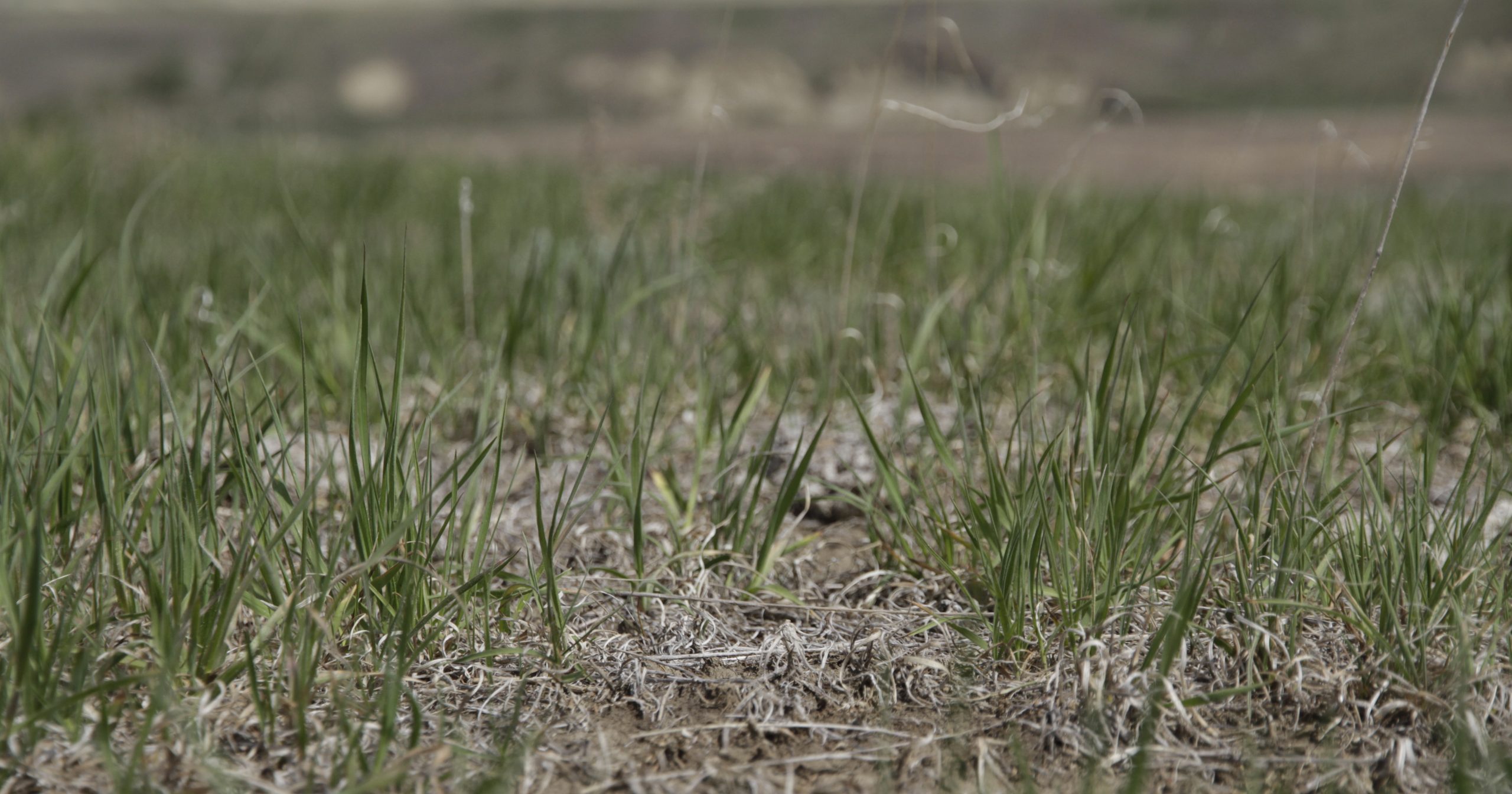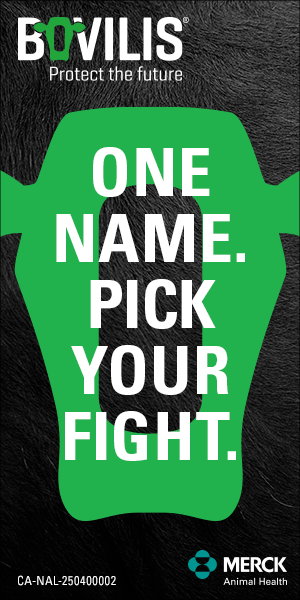AB Direct - Steers
Rail: 496.00-500.00 del
AB Direct - Heifers
Rail: 496.00-500.00 del
US Trade- Steers
Rail: 365.00-372.00 (IA, NE)
US Trade - Heifers
Rail: 365.00-372.00 (IA, NE)
Canadian Dollar
0.10

Conditions may increase threat of anthrax in Alberta
With the ever-changing summer weather in Alberta, producers need to be on the lookout for anthrax.
Typically appearing during periods of hot, dry weather following wet conditions, anthrax is a rapid and fatal disease caused by bacteria in soil. A few isolated cases of anthrax occur almost every year in Western Canada.
Animals contract the disease by consuming infected soil, feed or water, causing death within hours. When spores of bacteria are brought to the surface, conditions that increase the risk of soil consumption (i.e. tillage, drought, close cut hay) can also increase the risk of anthrax.
Initial symptoms to watch for can include: weakness and depression, difficulty breathing, a lack of coordination, recumbency (downer animal), and convulsions. Due to the rapid nature of the disease, death is often the first sign producers will see.
Protecting cattle from anthrax
Anthrax vaccinations are an effective way to protect cattle. Talk to your veterinarian to learn more, and see if it’s recommended for your circumstances.
Anthrax can be treated with antibiotics if caught in time, but they will not provide long-term protection.
Do not treat animals with antibiotics within eight days of vaccination,
or if you plan to vaccinate within the eight days.
If anthrax is suspected
If anthrax has made it into your herd, deadstock must be handled with caution. The carcass should be carefully covered and secured to prevent scavengers from accessing the carcass and potentially spreading the anthrax spores further. Incineration is the preferred disposal method. When done properly, it destroys anthrax bacteria and spores. Consult your veterinarian or rural municipality to find out if incineration is legal in your area, and decide the best fuel to use, the safest way to manage the incineration, and the proper clean-up afterwards.
If incineration isn’t possible, burial may be an option. But, bacteria spores can survive in the soil for decades. It’s therefore important to bury the carcass early, and deep (six to eight feet).
Exercise caution in wet areas and do not bury a carcass for decomposition in flood-prone zones.
Record the coordinates of any burial or burn locations on the farm.
Do not move or come into direct contact with the carcass unless absolutely necessary. With no other choice, wear gloves and long sleeves, cover any open wounds, and thoroughly wash your hands and arms when you are done. Wash any exposed clothing and disinfect boots that may have contacted contaminated soil.
If a case of anthrax is suspected:
- Notify your veterinarian immediately.
- Discuss with your veterinarian if removing the surviving animals from the location is the best control option as animal movements could potentially spread the disease to an uncontaminated location.
- Limit scavenging if possible.
- Discuss vaccination options to protect the rest of the animals that may become exposed.
- DO NOT move the dead animal or open the carcass.
- DO NOT call for deadstock pickup.
Concerned producers should consult their veterinarian to determine whether vaccination is recommended, especially if their herd is in an area where the disease has been detected.
For more information: Beef Cattle Research Council | Canadian Food Inspection Agency | Government of Alberta
In Alberta, anthrax is a notifiable disease under Alberta’s Animal Health Act, and all suspected or confirmed cases must be reported to the Office of the Chief Provincial Veterinarian within 24 hours.
In Canada, anthrax is a reportable disease under the Health of Animals Act, and all cases must be reported to the Canadian Food Inspection Agency (CFIA).

